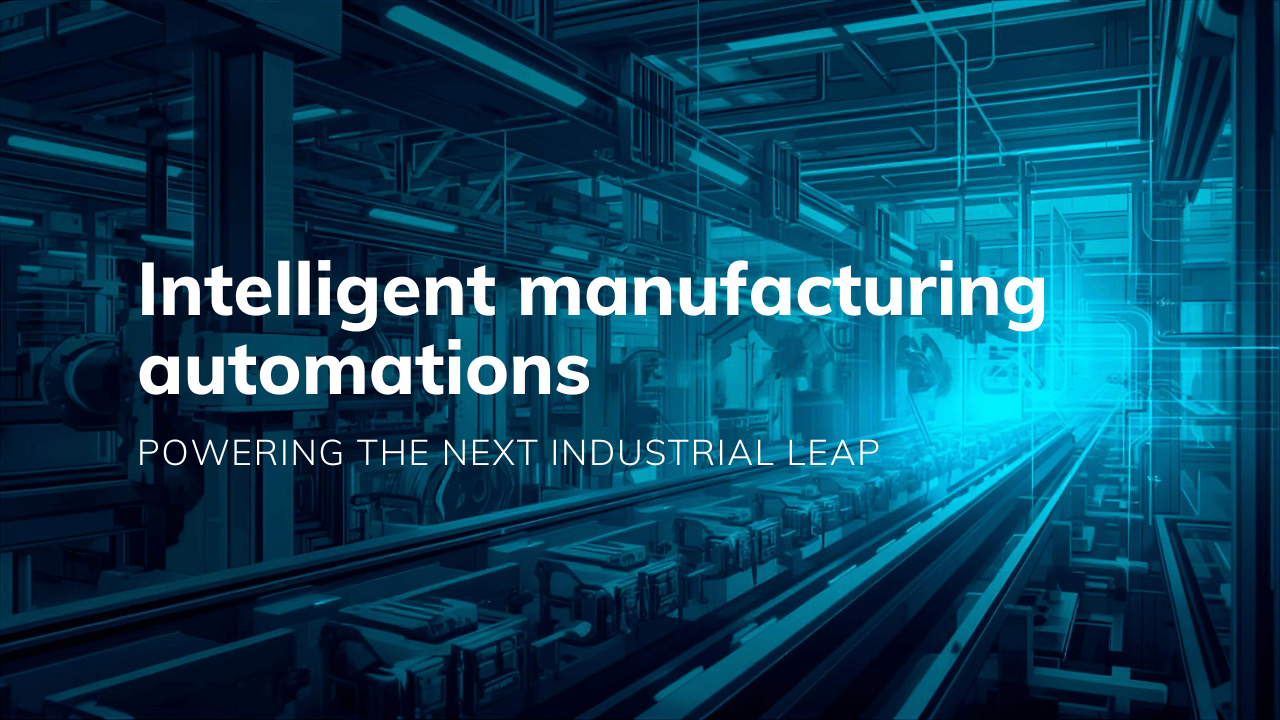Manufacturing has always evolved with one goal in mind – doing things better, faster, and smarter. But what truly defines smart manufacturing today isn’t just about machines that work harder; it’s about systems that think, learn, and adapt. At the core of this shift lies automation in manufacturing, where technologies like RPA (Robotic Process Automation), AI, and IoT come together to create intelligent, self-optimizing production environments.
Automation in Manufacturing: From Routine to Intelligence
Traditionally, automation in manufacturing meant installing machines, conveyors, and robots to replace repetitive manual tasks on the shop floor. That remains important, but what is changing is the reach of automation. Instead of stopping at replacing manual labour, it now spans across the factory ecosystem: machine-data capture, system integration, analytics, and decision support.
Consider some data: the global manufacturing automation market size was estimated at about $13.26 billion in 2023 and is projected to grow at a CAGR of around 10.8% through 2033, reaching about $36.98 billion.
This shows that automation is no longer optional – it’s foundational for manufacturing excellence and competitiveness.
In practical terms, smart factories now often feature:
- machine sensors and IoT feeding data in real time;
- automated data flows between shop floor and enterprise systems;
- analytics or AI detecting anomalies, predicting failures, or optimizing production;
- digital workflows that adjust processes with minimal human intervention.
This broader automation in manufacturing paves the way from efficiency towards intelligence – factories that not only execute but optimize.
RPA in Manufacturing: The Digital Side of Intelligent Automation
While physical automation handles machines, conveyor belts and mechanical operations, RPA in manufacturing addresses the digital layer – the workflows, data-entry, system switches, reporting, and integration tasks that support production.
RPA (Robotic Process Automation) software mimics human actions in user interfaces: logging into systems, extracting data, entering it elsewhere, generating reports or alerts. In a manufacturing context, this can mean:
- Automatically processing purchase orders or supplier invoices and entering them into ERP systems.
- Monitoring inventory levels in real‐time and triggering restock or repurposing actions.
- Collecting machine or sensor data, compiling quality reports, and auditing deviations.
- Coordinating production scheduling by reconciling data from MES, ERP, and supply chain platforms.
Some adoption data: manufacturing leads with around 35% RPA adoption among industries.
Companies increasingly recognise that while automation of physical tasks matters, automating digital tasks is just as critical – especially for creating connected, intelligent manufacturing operations.
When RPA connects with data from sensors (IoT) and analytics (AI), you move into true intelligent automation territory: manual hand‐offs vanish; decisions become faster; processes become more responsive.
Challenges & Solutions in Intelligent Manufacturing Automation
Even with strong drivers and proven benefits, many manufacturers face hurdles on the path to realising intelligent automation. Below are key challenges paired with practical solutions that businesses can apply accordingly.
| Challenge | Solution |
| Legacy systems and fragmented data – Many factories run older ERPs, isolated machines and siloed spreadsheets. This inhibits the data flow needed for intelligent automation. | Use RPA and middleware to bridge legacy systems and unify data streams. Begin with high‐value workflows (e.g., supplier invoice → ERP) to build momentum and data visibility. |
| High implementation cost & unclear ROI – Upfront investment in automation, integration, sensors, and software can feel risky. | Start small with pilot use cases that deliver measurable value: e.g., invoice processing, inventory alerts. Use those wins to build a business case for broader automation. |
| Resistance to change & skills gap – Workers may fear job loss; teams may lack experience with automation, AI or IoT. | Communication matters: highlight how automation eliminates repetitive tasks and frees up staff for higher‐value work (analysis and improvement). Invest in up-skilling. |
| Poor data quality and governance – Intelligent automation depends on accurate, timely data; if data is messy or untrusted, outcomes suffer. | Combine RPA with automated data validation, exception alerting, and master data governance. Ensure data flows are cleaned and reliable before higher-level analytics. |
| Scaling from pilot to enterprise – Many projects remain proof‐of‐concepts and never scale to full operations. | Define a roadmap: pilot → expand to core workflows → integrate with physical automation and analytics. Use the “value ladder” approach. Also, build a center of excellence (CoE) for governance. |
RPA Future Look in Manufacturing
For the future,
- Automation in manufacturing will increasingly be connected and intelligent: combining physical automation, RPA, IoT sensors, and analytics.
- The market growth supports this: the manufacturing automation market’s projected growth shows demand for interconnected systems.
- Human roles will shift – from execution to orchestration, from reactive maintenance to predictive optimisation.
Ultimately, when automation is at the core, manufacturers don’t just run things faster – they adapt faster. They respond to changes in demand, supply chain disruptions, and quality challenges in ways traditional factories cannot.
Take the Next Step: Build Intelligence into Your Manufacturing Core
Manufacturing leaders who start integrating automation today are setting the foundation for smarter, more resilient operations tomorrow. Whether it’s automating repetitive back-office tasks with RPA in manufacturing or connecting factory data through intelligent systems, each improvement adds up to measurable impact – faster cycles, cleaner data, and empowered teams.
If your organization is exploring automation in manufacturing, start small: identify one workflow that slows down productivity, and consider how automation could make it seamless.
From there, scaling intelligent automation becomes less about technology and more about transformation. Explore how WinActor RPA and automation can modernize your manufacturing operations – from shop floor to supply chain. Get a free trial or book a call with our expert today!





